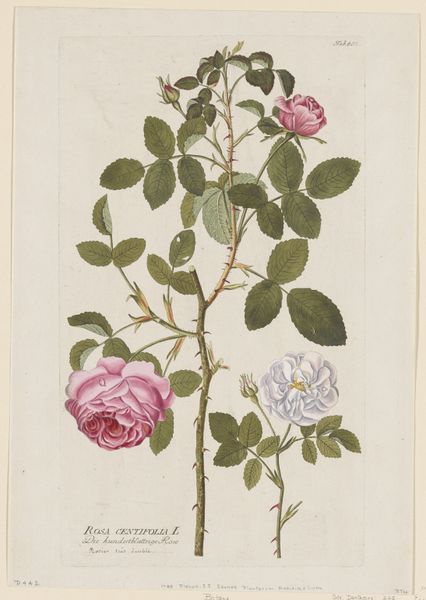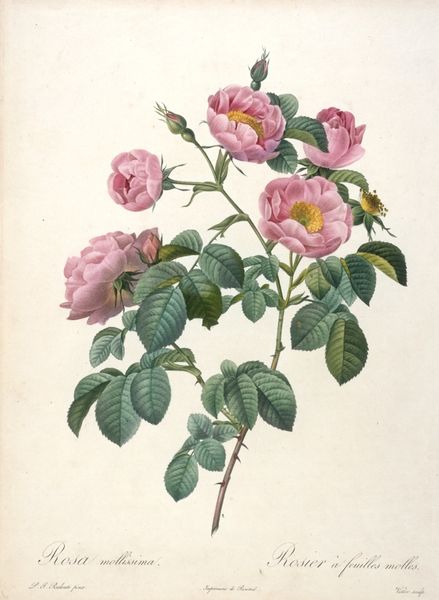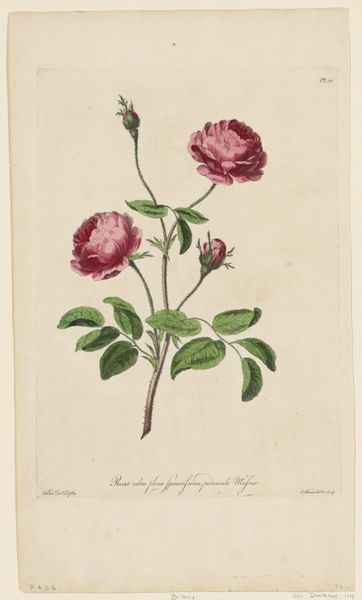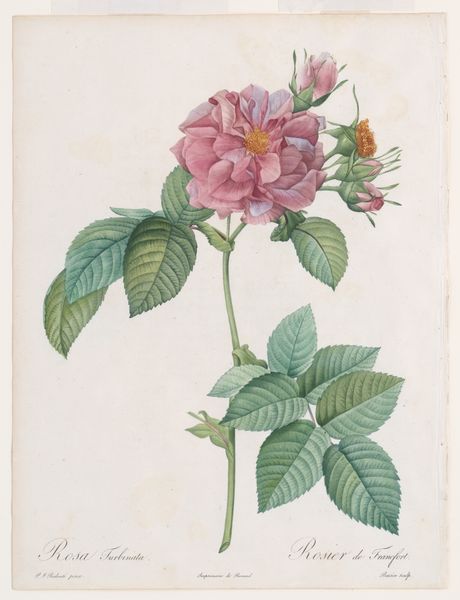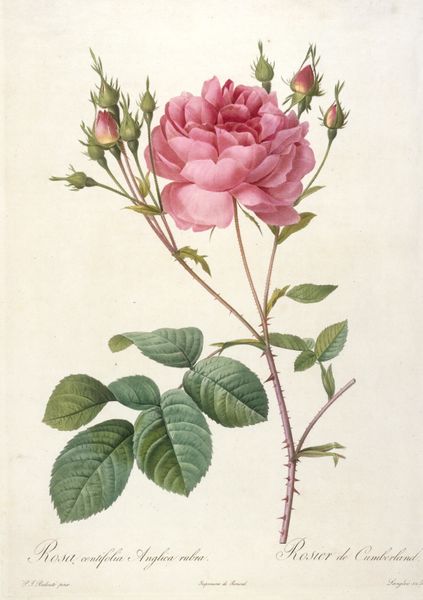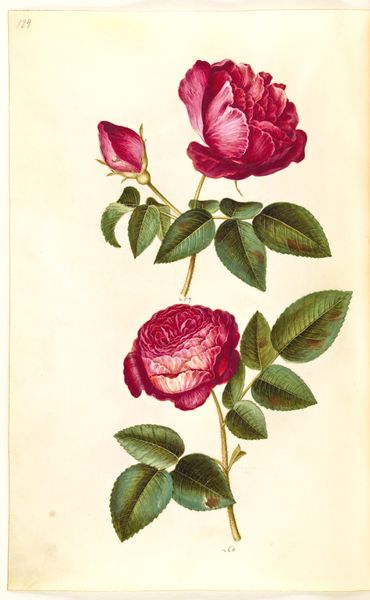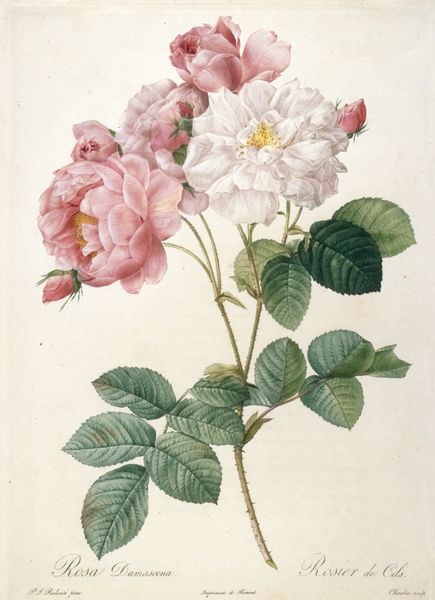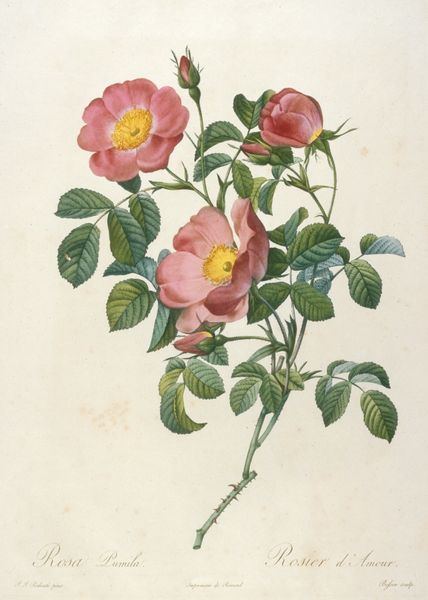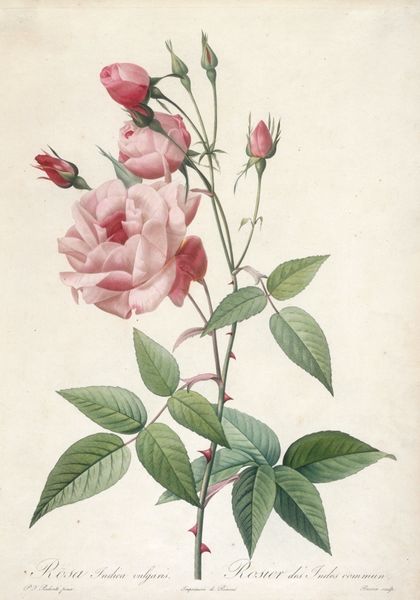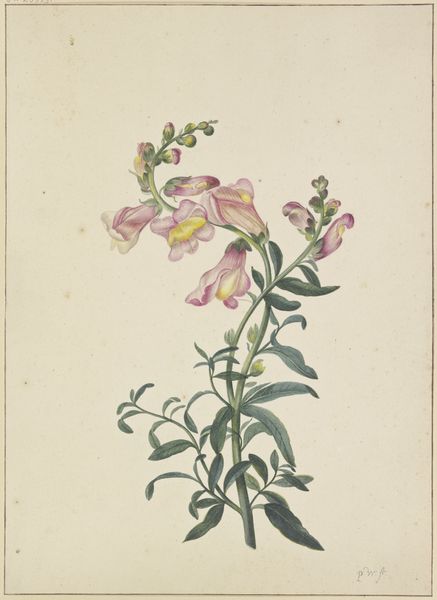
drawing, print, etching, paper, watercolor
#
portrait
#
drawing
# print
#
etching
#
paper
#
watercolor
#
romanticism
#
watercolour illustration
#
botanical art
#
watercolor
Dimensions: 245 × 207 mm (image); 288 × 231 mm (plate); 296 × 239 mm (sheet)
Copyright: Public Domain
This is Henry C. Andrews' depiction of a French Rose, made without a specified date, now residing in The Art Institute of Chicago. The rose, a dominant symbol here, has been used for centuries to express love, beauty, and transience. One can trace the rose's lineage back to ancient Greece and Rome, where it was associated with goddesses of love like Aphrodite and Venus. But the symbol extends even further, reappearing in Christian iconography as a symbol of the Virgin Mary, her purity and compassion. Think of Botticelli's "Birth of Venus," or earlier frescoes in Pompeii: the rose, eternally linked with beauty and mortality, blooms, fades, and resurfaces. A powerful emotional current is conveyed through the rose. It embodies the transient nature of life, engaging viewers in a deep, subconscious reflection on the passage of time and the fleeting nature of beauty. Thus, the rose perpetually evolves, mirroring humanity’s own ever-changing perceptions and cultural shifts, proving that its journey through the collective psyche is far from over.
Comments
No comments
Be the first to comment and join the conversation on the ultimate creative platform.
